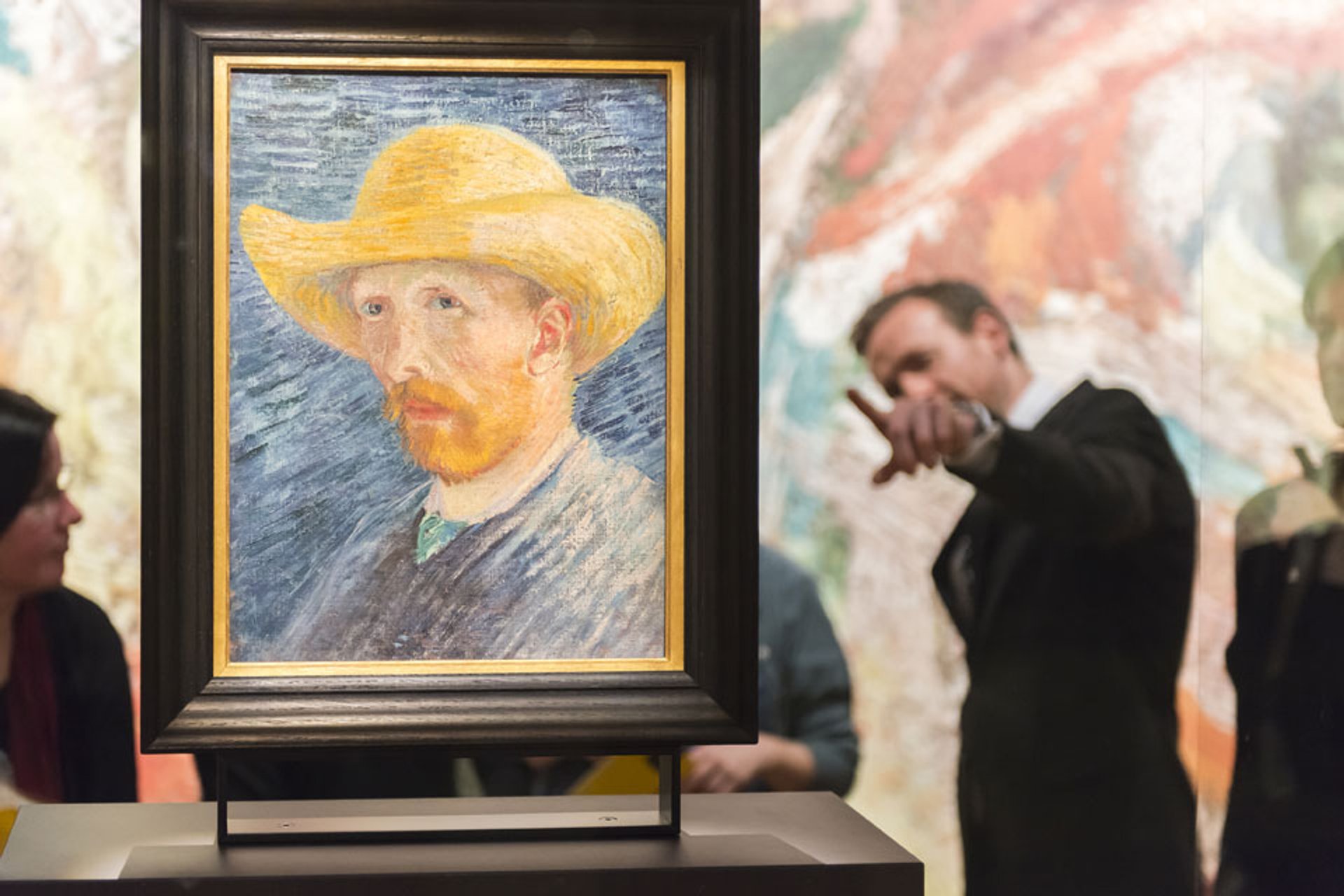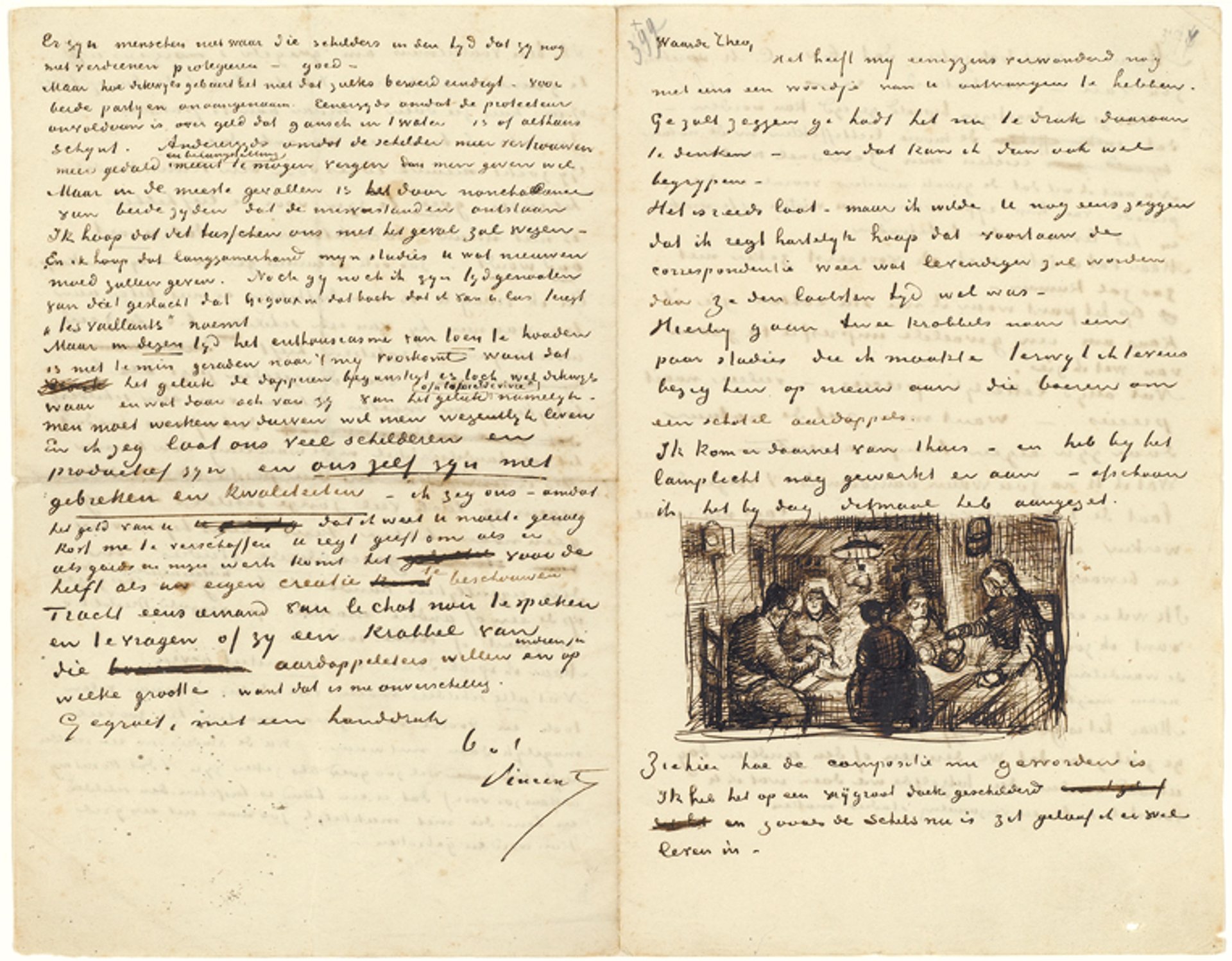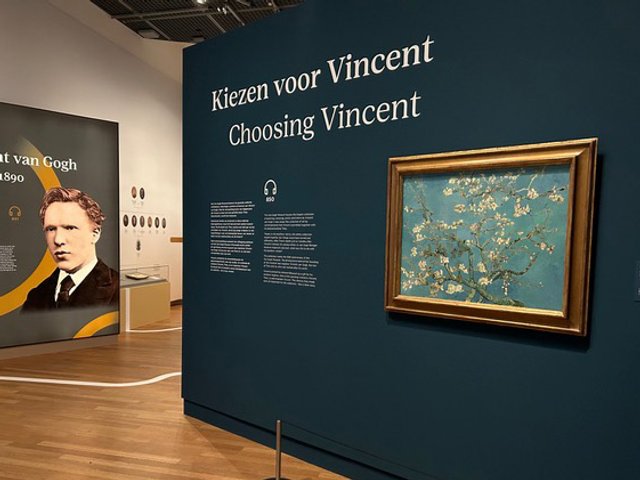The Van Gogh Museum has announced that it will reopen on 1 June, following a meeting this week between its new director Emilie Gordenker and the Dutch culture minister Ingrid van Engelshoven. Standing a bit more than the required 1.5m apart (the Dutch social distance), the minister reported that the government would almost certainly relax the 12 March coronavirus closure order for all museums. Van Engelshoven also pointedly said that her discussions with Gordenker included those of “a financial nature”, because of the total loss of revenue from visitors.

The Dutch culture minister Ingrid van Engelshoven (left) and the Van Gogh Museum director Emilie Gordenker, 11 March Courtesy of the Van Gogh Museum, Amsterdam; photo: Hans Roggen
Although not in the press announcement, we can report that initially only around 700 visitors a day will be allowed into the Van Gogh Museum. Last year the Amsterdam museum had 2.1 million visitors, which represents around 6,000 a day. This made it the second most popular Dutch museum, only just behind the neighbouring Rijksmuseum. During the summer, visitor numbers are particularly high with the tourist influx and longer opening hours, so a normal July figure for the Van Gogh Museum would be up to 9,000 a day.
The post-lockdown plan is to have a maximum of 200 visitors in the building at any one time. Since the museum has four floors in its permanent collection building and two main floors in its exhibition wing this means that people should be able to keep to social distancing. Tickets will need to be bought in advance and online (probably going on sale from 25 May).

Only 700 people a day will be allowed to enter the Van Gogh Museum under new social distancing rules Courtesy of the Van Gogh Museum, Amsterdam; photo: Jan Kees Steenman
Tourism has obviously ground to a halt for the moment, but usually 85% of the Van Gogh Museum’s visitors come from abroad. This means that of the 6,000 daily visitors in normal times, only 900 would be Dutch. This makes it feasible to reopen for only 700 people a day. Over time it should hopefully be possible to gradually increase the number.
But although most locals wishing to visit the museum will be able to do so, such limited numbers will have a catastrophic impact on the museum’s finances. The Dutch government grant for the Van Gogh Museum is around €7m a year, with nearly 90% of the museum’s revenue of €58m being self-generated. About €30m a year comes from ticket sales, covering just over half of expenditure, and shop and catering income from visitors is substantial. Gordenker, who only took over in February, will have a tough time balancing the books.
The museum’s current exhibition, In the Picture: Portraying the Artist, was only open for three weeks before the coronavirus closure and was due to shut on 24 May. However, it will now be extended until 30 August. This has required prolonging the agreements for 50 loans from other museums.

Vincent van Gogh’s letter to his brother Theo, 9 April 1885, with a sketch of The Potato Eaters Courtesy of the Van Gogh Museum, Amsterdam (Vincent Van Gogh Foundation)
The extension of the portraits show means that the scheduled summer exhibition, “Your Loving Vincent”: Van Gogh’s Greatest Letters, has been shifted to the autumn. It will now run from 9 October to 10 January 2021.
In turn, this has led to the postponement of the planned autumn exhibition Klimt: Inspired by Rodin, Van Gogh, Matisse, originally scheduled for October to January 2021. The Klimt show had then been due to be presented at Vienna’s Belvedere from February to May 2021, but this has just been postponed to spring 2023. Presumably Amsterdam's Klimt exhibition will be planned for just before or after the Vienna presentation.
The Kröller-Müller Museum in Otterlo, which holds the other major Dutch collection of Van Gogh’s work, also expects to reopen on 1 June.
When the Dutch museums are reopened, their counterparts in the UK and US will be closely monitoring to see how this goes, to guide them in dealing with the challenges ahead. UK and US museums are not expected to reopen before the summer.






